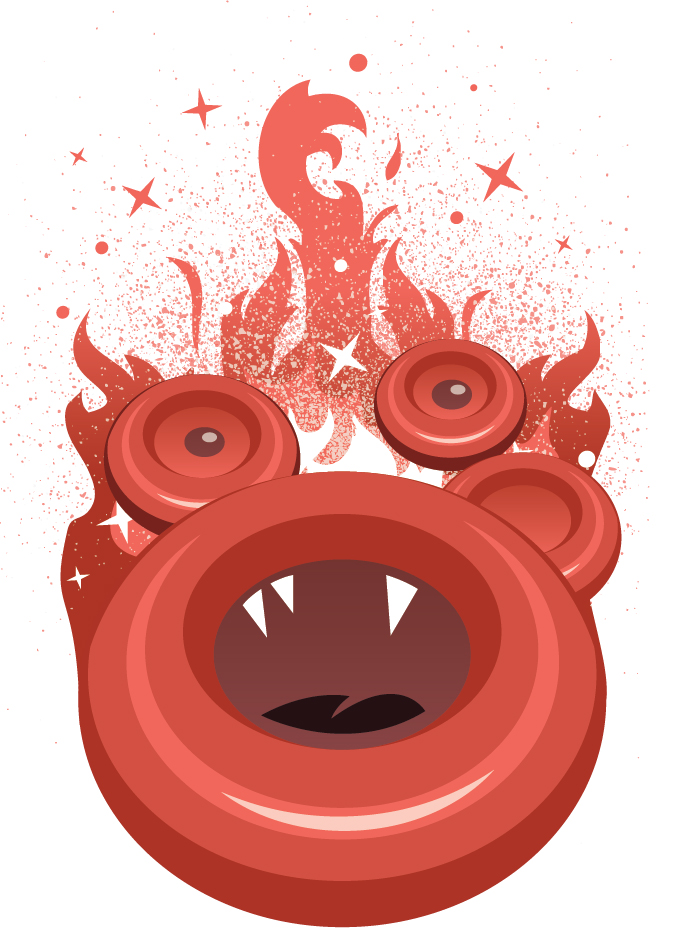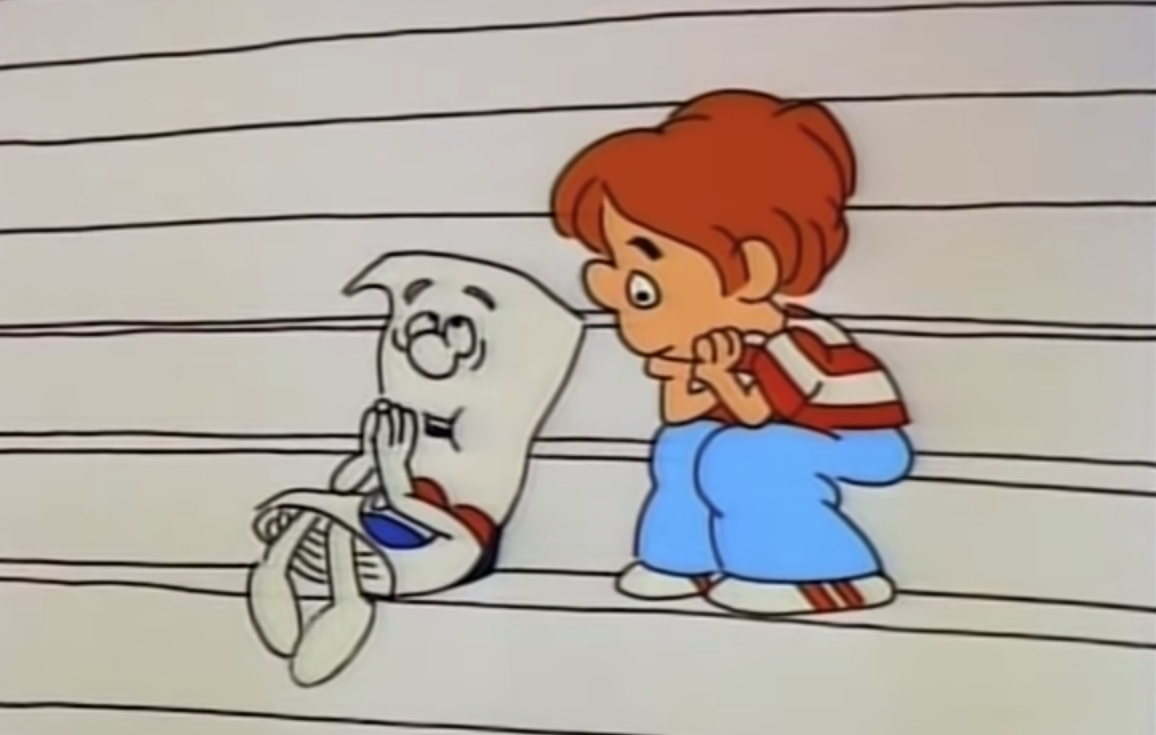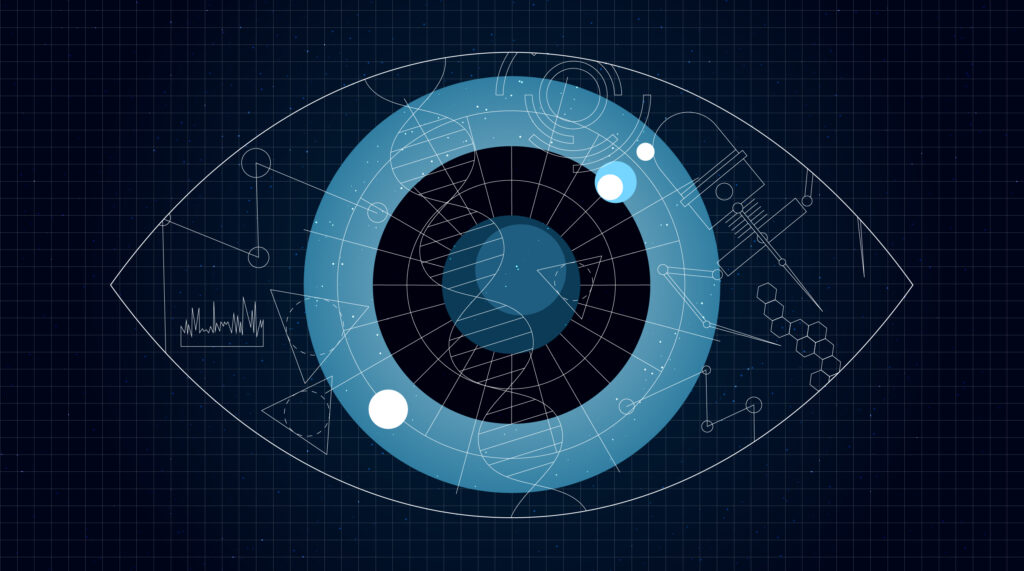Using animated videos to explain innovative ideas and futuristic scenarios
Explaining an innovative, abstract idea with just words or data can be extremely challenging. Animated videos make it possible to visualize even the most complex of subjects.
Why choose animation?
If there’s one thing that the internet and social media has proven, it’s that everyone has an idea or story to tell—or should I say—many, many, many stories to tell if you just have an extra 20 minutes to spare before your next conference call.
A new, innovative product for this. A faster way to find that. Your jaw will become unhinged and fall off when you hear about such-and-such.
(It never does, BTW.)
Often the pitch is pretty straightforward, so a nice hero shot of the product or prototype—along with a few diagrams and stock photos of people laughing over coffee—is enough to help your audience understand.
Other times, those stories revolve around innovative, abstract ideas that don’t exist today, can’t easily be compared to something else, or somehow have to be seen to be understood.
That’s where the value of an animated video comes in.
So…what is animation?
The art of animation
Put simply, animation is the art of making things move. It’s the unique combination of narrative storytelling, custom illustration, music, sound effects, and editing that really brings your story to life and makes people care.
Whether your audience is in a classroom, conference room, or a living room, animated videos help ensure your message gets noticed and that people will pay closer attention to what you have to say—provided you teach them something, entertain them a little, and make it quick!
Show them what you mean…
Whether you’re looking to educate students, give a corporate presentation, or pitch your future vision to investors, studies show that explainer videos are the best and most efficient way to deliver your message. These videos simplify things by breaking the information down into smaller chunks that help the audience grasp information more quickly. Their digital format also allows them to be easily shared and circulated.
…make it fun…

The beauty of animation is that because there are no rules, anything and everything becomes possible. Inanimate objects andanimals can come to life; tiny submarines can take you on a voyage through your bloodstream; futuristic cityscapes can be revealed. Making the abstract visual and compelling makes it much more memorable.
…but don’t overstay your welcome
Studies show that you have a very limited window to hold people’s attention. Ideally they say you should tell your story in 1-2 minutes. Even better if you can keep things under one minute. Sure, if your story is amazing people may keep watching—but you’re taking a risk.
We’ve found that three minutes is a real sweet spot. We don’t do commercials so we’re not just selling a feeling in 30 seconds. We do informational stories, and that means you really have to teach people something, really explain things, and that takes a little time. Of course true learning takes more than three minutes, but we’re talking about getting peoples’ attention, hooking them so they want to learn more.
Turning animation into pathos
 Because animated videos are very often represented by cartoon-like imagery, they are seen as welcome visitors. That’s probably because cartoons take us back to our childhood when they were created to make us laugh, help us get through tough times and even help us with understanding government. Anybody remember Schoolhouse Rock? I still know the words to those songs. Talk about effective.
Because animated videos are very often represented by cartoon-like imagery, they are seen as welcome visitors. That’s probably because cartoons take us back to our childhood when they were created to make us laugh, help us get through tough times and even help us with understanding government. Anybody remember Schoolhouse Rock? I still know the words to those songs. Talk about effective.
“Animation does not set out to create connectedness through shared reality, but through shared imagination.”
—Kelsey Hodgkin, Shots.net
Connecting with others is about empathy, sharing, and finding common ground. Animated videos give a way to do that. We can use a common visual language and platform to tell stories on a global scale and better promote “cross-cultural beliefs.
Animation topics need not exist in the real world. If something can be imagined, it can be illustrated and animated. It’s about creating a shared understanding of the world around us and what we can do to effect change.
For example, a few years back we set out to illustrate “The Science of Gratitude”. We worked hard to figure out how abstract visual concepts and metaphors could help create a calm, clear, fun, and meaningful narrative around the gratitude and how to incorporate it into your daily life. We did it using only shapes and colors, yet it still resonates on an emotional level.
Similarly, RSA Shorts teamed with Dr Brené Brown to craft a beautifully animated video that talks about the difference between Empathy and Sympathy using a bear and a fox as the main characters. It works because we can all relate to animals. Even though both gratitude and empathy are highly human characteristics, using non-human visuals in both of these videos helps all people, from a variety of cultures and backgrounds, to connect with the content.
Scientific visualization techniques
While most people see animation as a creative outlet or a form of entertainment, its range of abilities are endless, especially when looking towards the future. Animated videos are leading to breakthroughs in the world of science and technology. Here are a few examples worth highlighting.
Painimation
 A group of researchers at the University of Pittsburgh and UPMC (University of Pittsburgh Medical Center) are working to develop a new way that patients can describe the quality and intensity of their pain to physicians by generating graphic visualizations and animations instead of words or numeric scales to assess pain quality, intensity, and course.
A group of researchers at the University of Pittsburgh and UPMC (University of Pittsburgh Medical Center) are working to develop a new way that patients can describe the quality and intensity of their pain to physicians by generating graphic visualizations and animations instead of words or numeric scales to assess pain quality, intensity, and course.
This decreases the burden of long, detailed pain assessments while collecting pertinent information on each patient’s pain experience through an easy to administer, novel, and engaging medium.
Researchers believe using animations to measure pain can allow patients to not only describe pain sensations in a similar manner to how they experience them but minimize potential barriers to pain assessment because the effects of language and literacy are taken out of the equation.
Cartoon Cheese
The 3D animation that brought Remy to life in “Ratatouille” is also bringing to life a molecular world that can only be seen through microscopes. Until recently, that world was hand-drawn by researchers hunched over their tools, rendering a complex and dynamic environment in static 2D. But now, animations are being used for scientific publications, either as supplemental downloads or embedded material for online publications.
Scientific animators like Janet Iwasa are using cutting-edge animation techniques to train the next generation of researchers looking for cures to HIV, dengue virus, and Ebola. Teams from the University of Washington in Seattle and Northeastern University in Boston run Foldit, a crowdsourced computer game in which hundreds of thousands of players, a mixture of those with science backgrounds and people interested in science in general, solve 3D puzzles to help scientists understand protein folding.
Virtual Space Travel
SpaceEngine is a realistic virtual Universe on your computer that allows you to travel from star to star, from galaxy to galaxy, landing on any planet, moon, or asteroid with the ability to explore its alien landscape. You can alter the speed of time and observe any celestial phenomena you please. All transitions are completely seamless, and this virtual universe has a size of billions of light-years across and contains trillions upon trillions of planetary systems. The procedural generation is based on real scientific knowledge, so SpaceEngine depicts the universe the way it is thought to be by modern science.
Make anything seem achievable
Regardless of what innovative, abstract subject matter you’re trying to explain, bringing that story to life visually through illustration and animation will pull people in, help them understand and make even the most far out ideas seem achievable.
